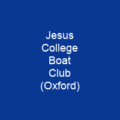MV Darlwyne was a pleasure cruiser, a converted Royal Navy picket boat, that disappeared off the Cornish coast on 31 July 1966 with its complement of thirty-one. Twelve bodies and a few artefacts were later recovered, but the rest of the victims and the main body of the wreck were never found. Built in 1941, after ending its naval service in 1957 it was used as a private cabin cruiser, first on the River Thames and later in Cornwall.
About Loss of MV Darlwyne in brief

A memorial screen, listing the names of the 31 dead, was dedicated in mylor church at a special service led by the Bishop of Truro in April 1967. A Board of Trade enquiry into the loss placed the main blame on Barratt and Bown for allowing the vessel to go to sea in an unsafe and unprepared condition. The Board’s report exposed the laxity with which boat licensing regulations were being administered, and led to stiffer penalties for non-compliance, but there were no immediate regulatory changes, and no criminal proceedings were recommended. The vessel remained with the Royal Navy until 1957, when it was sold to the Belsize Boatyard in Southampton. In September 1959 the boatyard sold the boat to joint owners Messrs Lowe and Gray, who replaced the engines with less powerful twin Perkins P6 units each generating 65 hp. On 22 April 1960 it was registered as a cabin cruiser under the name Darlwne. In October 1962 Darlawne was transferred to St Mawes, in Falmouth Harbour, Cornwall. It was taken there by a crew of six; although the crew of the crew were critical of the boat’s performance in certain weather conditions. At Mylor, in the Carrick Roads estuary of the River Carrick, it was inspected by a local marine surveyor in September 1963, and found it top-heavy, difficult to steer, with a tendency to list, and a lack of steering.
You want to know more about Loss of MV Darlwyne?
This page is based on the article Loss of MV Darlwyne published in Wikipedia (as of Nov. 04, 2020) and was automatically summarized using artificial intelligence.







